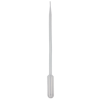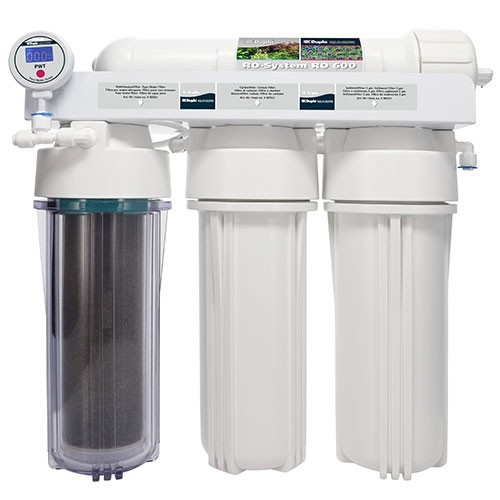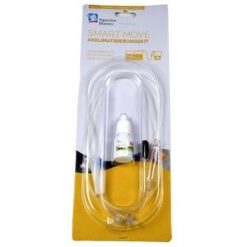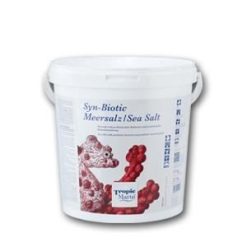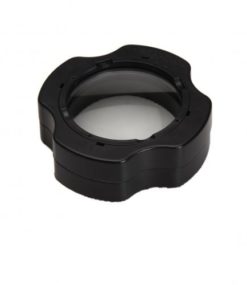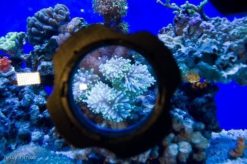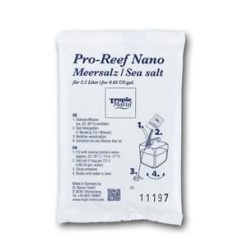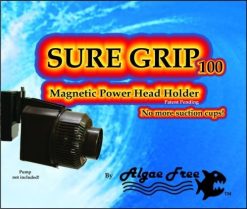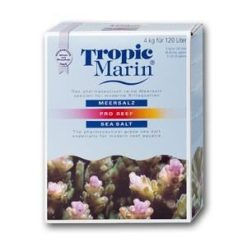Reverse osmosis units create the optimal supply water for marine water and freshwater aquaria. Many water problems can often only be resolved by using reverse osmosis water. Reverse osmosis units use the principle of physical filtration. Unlike ion exchangers, for example, which exchange ions (e.g. calcium) which cause hard water with other ions (e.g. sodium) which do not cause hard water, reverse osmosis unit physically removes pollutants (e.g. silicate, nitrate) and hardness components from the water. In a reverse osmosis unit, the water runs through a semipermeable membrane at the residential pressure in water lines of 2 − max. 6 bar. The substances (pollutants, salts or hardness components) which have dissolved in the water are unable to pass the fine lattice structure of the membrane and remain in the residual water. This residual water is discharged as concentrate and can easily be used for cleaning, watering or as service water.
The downstream ultrapure water filter removes even the smallest residues in the permeate (process water of a reverse osmosis unit) and indicates the exhaustion state of the exchanger (Duresin RI) by changing colour from blue to green.
With the PWT (pure water tester), the water quality of the permeate (process water) can be easily checked at any time.
